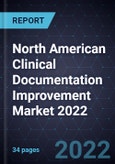Clinical documentation improvement (CDI), a vital mechanism in documenting care in the healthcare space, is a strategic necessity that goes beyond a component in the broader revenue cycle management (RCM) of claims processing. It focuses on improved patient outcomes, supports data quality that tells an accurate story of the patient’s care, facilitates accurate reimbursement, and ensures compliance risk management and revenue integrity. With growing automation and digitalization in the healthcare space, legacy CDI solution providers are not able to evolve with payers’ ever-changing regulatory requirements for clinical documentation and coding.A Benchmarking System to Spark Companies to Action - Innovation that Fuels New Deal Flow and Growth Pipelines
Solution providers are reimagining tools that pave the way for next-generation clinical documentation across the healthcare continuum. The emphasis on detailed clinical documentation and coding will be paramount to personalized treatments, preventing adverse effects (medical reconciliation, hospital-acquired infections, clinical trial mismatches) and optimizing the clean claims rate. As a result, the contribution of various CDI solutions to the overarching RCM portfolio is forecast to increase from 20% in 2020 to 33% in 2024. Regulators prioritize digitally-enabled clinical documentation as they move away from legacy approaches of assessing gaps in payment cycles (clinical documentation after treatment) and aim for transparency, accuracy, and specificity of fund utilization in annual budgets and push for more proactive population health management and prioritized disease-specific CDI. There is a clear need for automation and analytics-based CDI management solutions that leverage the power of machine learning (ML) and artificial intelligence (AI) to achieve regulatory compliance, virtual assistant technology, natural language processing, clinical decision support, and assist with timely decision-making for proper reimbursement and reduce physician burnout.
The overall goal of any CDI program is to improve clinical documentation, coding, and reimbursement. It also aims to provide completeness, consistency, and accuracy of medical records that support the physician’s judgment and medical decision-making. Over the next 3 to 5 years, the CDI market is expected to witness major consolidation as merger and acquisition (M&A) activities increase among legacy EMR companies, CDI vendors, and legacy HIT vendors competing to provide pure-play solutions and capabilities on a centralized platform. The role of CDI in enabling healthcare equity will be paramount. Accurate, comprehensive, and ethnic-appropriate clinical documentation will help providers standardize reimbursement and opt for payment exceptions for specific population health management initiatives.
This will allow equitable access to quality care for all. The impact of potential regulations centered around chronic condition management (e.g., COVID-19) focused on post-pandemic care, telemedicine, and virtual care will boost CDI growth further. Integrating CDI EMR workflow tools will help vendors offer more advanced CDI and best-in-class offerings and capabilities. Outsourcing CDI skills, training, and expertise will likely continue to rise, resulting in suboptimal outcomes and staff shortages.
Table of Contents
1. Strategic Imperative and Growth Environment
2. Frost Radar™
3. Companies to Action
4. Strategic Insights
5. Next Steps: Leveraging the Frost Radar™ to Empower Key Stakeholders
6. Frost Radar™ Analytics
Companies Mentioned (Partial List)
A selection of companies mentioned in this report includes, but is not limited to:
- 3M Health Information Systems
- Arintra
- Cerner
- Chartwise
- EZDI (an AGS Health company)
- Greenway Health
- Nuance (part of Microsoft)
- Optum
- R1 RCM
- Waystar








